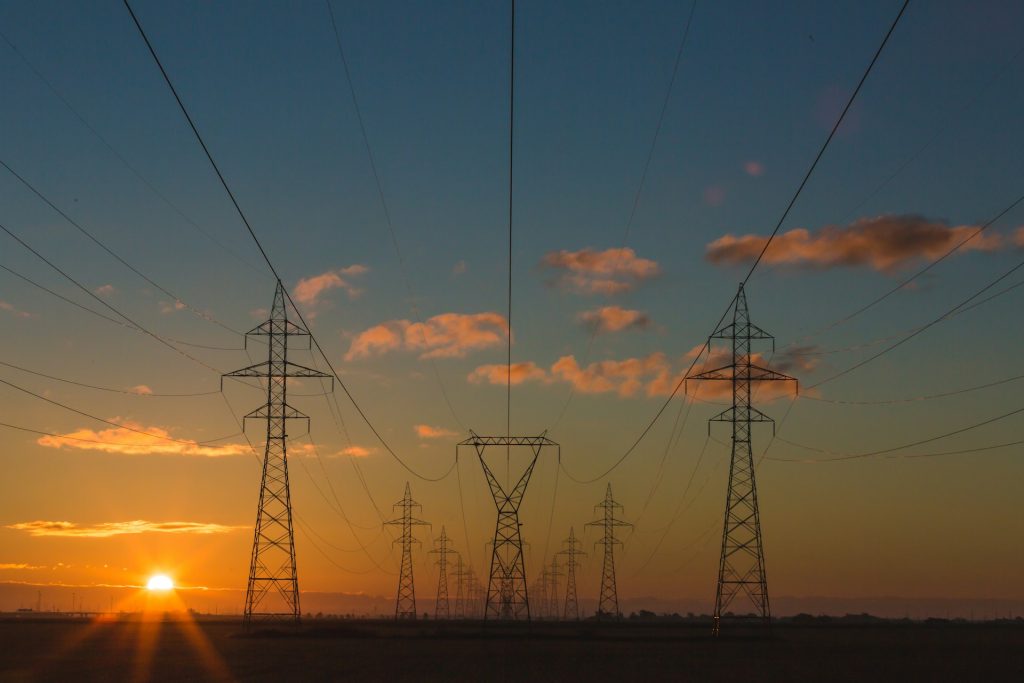The Ripple Effect: How Strained Power Grids Will Change How Communities Live
By: Evelyn Long
U.S. power grids are becoming increasingly strained as climate change intensifies. These systems face unprecedented challenges due to rising energy demands and more frequent extreme weather events. What happens when grids can no longer meet the needs of modern life?
Understanding the Power Grid and Its Strain
Power grids are complex networks that deliver electricity from producers to consumers. In the U.S., aging infrastructure, increased demand and extreme weather are pushing these systems to their limits. Natural disasters like hurricanes, heat waves, and wildfires spike energy demand and damage critical infrastructure, leading to widespread outages.
In 2023 alone, the U.S. experienced 28 weather events that caused at least $1 billion in damage each, many of which disrupted power systems. The frequency and intensity of these storms are increasing as warming oceans fuel stronger hurricanes and rising temperatures trigger longer, more severe heat waves.
The Consequences of a Strained Grid
Blackouts and brownouts become more frequent when power grids are pushed to their limits. In 2021, the Texas power grid failed during a severe winter storm, leaving more than 10 million people without heat or electricity. Aside from being inconvenient, strained grids can be deadly. In the same year, a heat wave in the Pacific Northwest overwhelmed grids, resulting in hundreds of deaths from direct and indirect heat-related causes.
These events will become more common as climate change continues to worsen. Strained grids will force U.S. citizens to rethink energy usage, especially as more homes rely on air conditioning to manage rising temperatures. Blackouts in hurricane-prone areas could last for weeks, and heat waves will cause rolling brownouts in regions unaccustomed to such high demand.
The Impact of Natural Disasters on Power Grids
Natural disasters — such as hurricanes and tornadoes — damage essential structures or components of the U.S. power grid. In 2021, Hurricane Ida caused catastrophic damage to Louisiana’s power system, leaving more than one million people without electricity. Citizens can expect more of these devastating outages as hurricanes intensify. Residents in high-risk areas will need to invest in backup power systems — such as solar panels or generators — to cope with longer, more frequent blackouts.
Heat waves also present another growing challenge. Energy consumption spikes in response to rising demand for air conditioning. California has already experienced rolling blackouts during heat waves, and other states are likely to follow. These power disruptions will force citizens to make difficult choices about how and when they use electricity.
Life Under a Strained Power Grid
As power grids continue to struggle, U.S. citizens will need to adapt. Energy conservation will become a way of life, with governments and utilities incentivizing reduced consumption during peak times. Smart grids may help alleviate some pressure by adjusting demand automatically, but personal responsibility will also be key.
Living off the grid offers a solution for those seeking greater independence from traditional power systems. Generating power through renewable sources such as solar or wind allows less reliance on an increasingly strained system, providing energy independence and reducing overall environmental footprint.
Remote work and home-based lifestyles — which became more common during the COVID-19 pandemic — will face new challenges. Unreliable electricity could disrupt workdays and business operations, especially in regions prone to natural disasters. Urban planning will need to focus on energy resilience, with green building standards and decentralized power systems like solar and wind playing a larger role in future infrastructure.
The Future of Energy
In the face of climate change, communities must confront the reality of strained power grids. Transitioning to renewable energy sources is critical to reduce the strain on these aging systems. However, the shift to green power alone won’t be enough. Investments in grid modernization, energy storage and disaster preparedness will be necessary to prevent catastrophic failures.
Strained power grids will force significant lifestyle changes for U.S. citizens as natural disasters become more frequent and energy demand rises. How communities adapt to these alterations will define the future of energy security.
About the Author:
Evelyn Long is a writer and editor focused on construction and sustainability. Her work can be found on Renovated, a web resource for better building and design.




